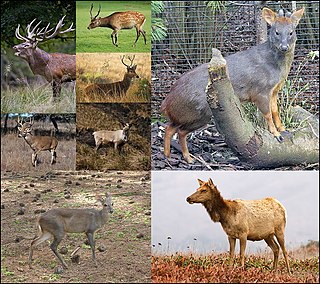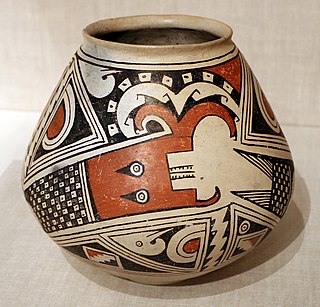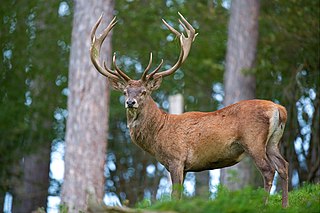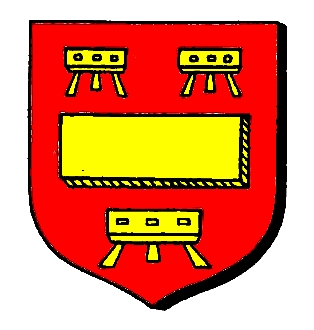
A deer or true deer is a hoofed ruminant mammal of the family Cervidae. The two main groups of deer are the Cervinae, including muntjac, elk (wapiti), red deer, and fallow deer; and the Capreolinae, including reindeer (caribou), white-tailed deer, roe deer, and moose. Male deer of all species, as well as female reindeer, grow and shed new antlers each year. In this, they differ from permanently horned antelope, which are part of a different family (Bovidae) within the same order of even-toed ungulates (Artiodactyla).

The Horned Serpent appears in the mythologies of many cultures including Native American peoples, European, and Near Eastern mythology. Details vary among cultures, with many of the stories associating the mystical figure with water, rain, lightning, thunder, and rebirth. Horned Serpents were major components of the Southeastern Ceremonial Complex of North American prehistory.

Deer have significant roles in the mythology of various peoples located all over the world, such as object of worship, the incarnation of deities, the object of heroic quests and deeds, or as magical disguise or enchantment/curse for princesses and princes in many folk and fairy tales.

The red deer is one of the largest deer species. A male red deer is called a stag or hart, and a female is called a hind. The red deer inhabits most of Europe, the Caucasus Mountains region, Anatolia, Iran, and parts of western Asia. It also inhabits the Atlas Mountains of Northern Africa; being the only living species of deer to inhabit Africa. Red deer have been introduced to other areas, including Australia, New Zealand, the United States, Canada, Peru, Uruguay, Chile and Argentina. In many parts of the world, the meat (venison) from red deer is used as a food source.

Milford on Sea, often hyphenated, is a large coastal village and civil parish in the New Forest district, on the Hampshire coast, England. The parish had a population of 4,660 at the 2011 census and is centred about 3 miles (4.8 km) south of Lymington. Tourism and businesses for quite prosperous retirees as well as the care sector make up large parts of its economy. Businesses include restaurants, cafés, tea rooms, small shops, garden centres, pubs and camping/lodge/caravan parks, bed-and-breakfasts and a few luxury hotels. Shops cluster on its small high street, which fronts a village green. The western cliffs are accessed by flights of steps. In common with the flatter coast by the more commercial and eastern part of Milford, they have car parks with some facilities, which, along with many apartment blocks and houses, have close views of The Needles, which are the main, large chalk rocks immediately next to the Isle of Wight.

Boldre is a village and civil parish in the New Forest district of Hampshire, England. It is in the south of the New Forest National Park, above the broadening (estuary) of the Lymington River, two miles (3 km) north of Lymington. In the 2001 census, the parish had a population of 1,931, and in the 2011 census, 2,003. The parish has a few campsites and a tourist caravan site, along with visitor parking around its mixed woodland and heath hamlet of Norley Wood.

Sway is a village and civil parish in Hampshire in the New Forest national park in England. The civil parish was formed in 1879, when lands were taken from the extensive parish of Boldre. The village has shops and pubs, and a railway station on the South West Main Line from Weymouth and Bournemouth to Southampton and London Waterloo. It is the site of Sway Tower, a 66-metre (217 ft) concrete folly built in the 19th century.

In British folklore and urban legend British big cats refers to the subject of reported sightings of non-native, typically large felids feral in the United Kingdom. Many of these creatures have been described as "panthers", "pumas" or "black cats".

Fritham is a small village in Hampshire, England. It lies in the north of the New Forest, near the Wiltshire border. It is in the civil parish of Bramshaw.

The Elwetritsch, plural Elwetritsche or Elwetritschen, is a birdlike legendary creature which is reported to be found in southwest Germany, especially in the Palatinate. The Elwetritsch can be seen as a local equivalent to mythical creatures of other regions.

A white stag is a white-colored red deer, wapiti, sika deer, chital, fallow deer, roe deer, white-tailed deer, black-tailed deer, reindeer, moose, or rusa, explained by a condition known as leucism that causes its hair and skin to lose its natural colour. The white deer has played a prominent role in many cultures' mythology.

A hart is a male red deer, synonymous with stag and used in contrast to the female hind; its use may now be considered mostly poetic or archaic. The word comes from Middle English hert, from Old English heorot; compare Frisian hart, Dutch hert, German Hirsch, and Swedish, Norwegian, and Danish hjort, all meaning "deer". Heorot is given as the name of Hrothgar's mead hall in the Old English epic Beowulf.

South Baddesley is a small village in the civil parish of Boldre in the New Forest National Park of Hampshire, England. It lies 2.3 miles (3.7 km) north-east from Lymington, its nearest town.
Priestlands School is a Mixed-sex education secondary school located in Pennington, Hampshire in southern England. The school serves an area that includes the villages of Beaulieu, Brockenhurst, East Boldre, Hordle, Norleywood, Pilley, South Baddesley, Sway and the towns of Lymington and Milford-on-Sea.

Andrew Stratford, also known as Andrew de Stratford and Andrew de Strelford, was a medieval English landowner and verderer of the House of Stratford.

John Stratford, also known as John Stratforde, was a medieval English verderer and landowner.
Brice Stratford is an English director, writer, and actor-manager. He has focused on classical theatre, the New Forest area of Southern England, and British folklore and mythology. He founded the Owle Schreame theatre company, which focused on Renaissance plays. He has written two books on British mythology.














